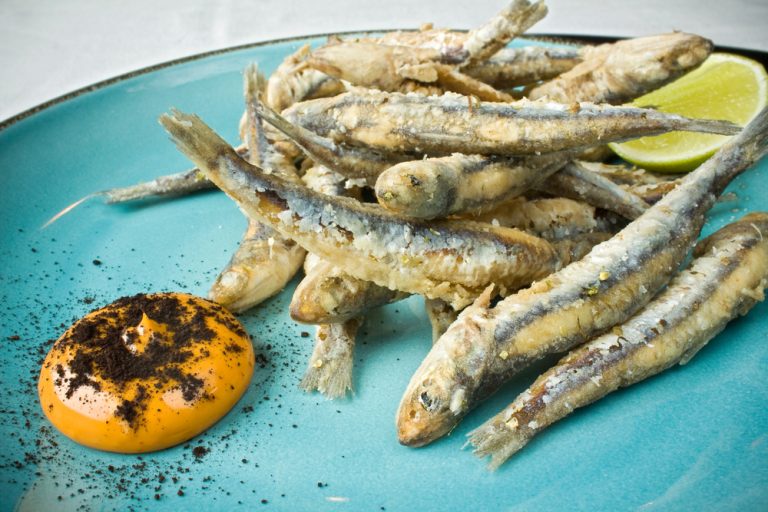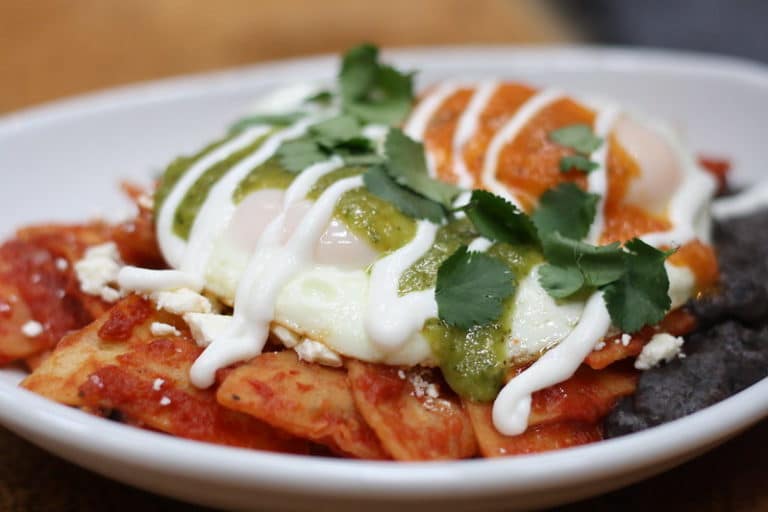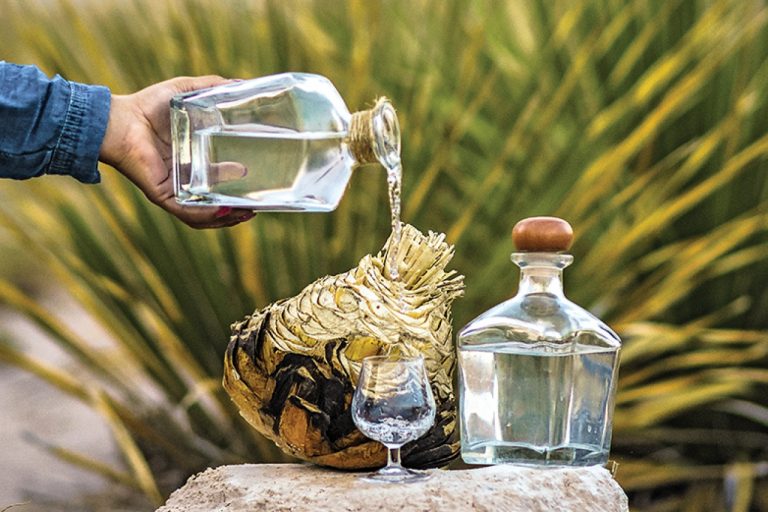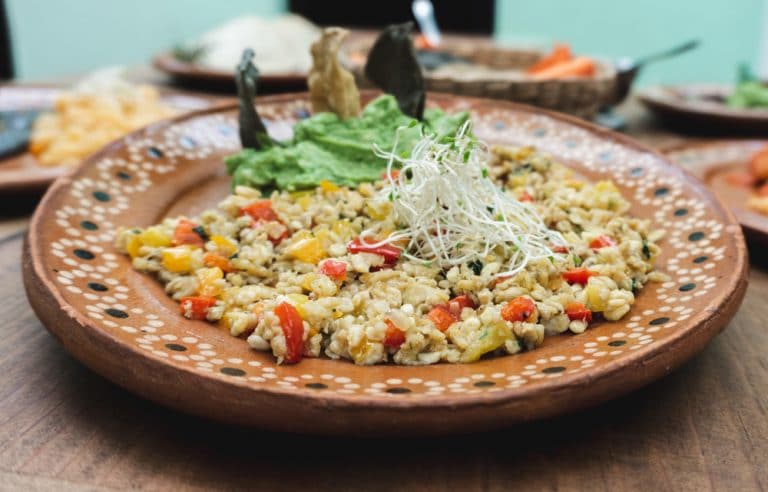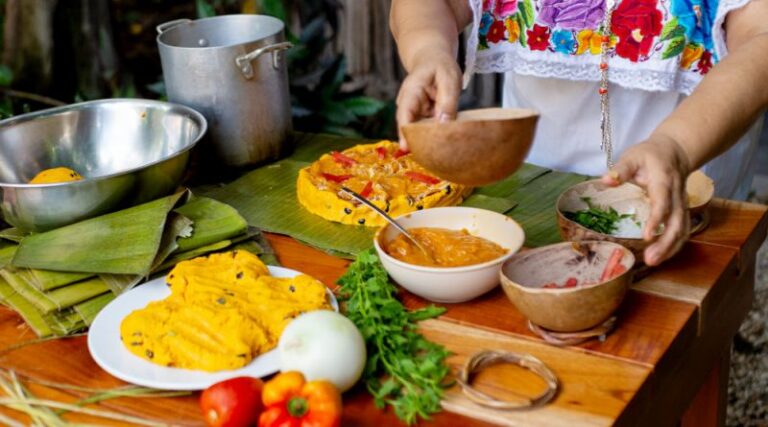Pozole Palette: Discovering the Delicious Red, White, and Green Pozoles
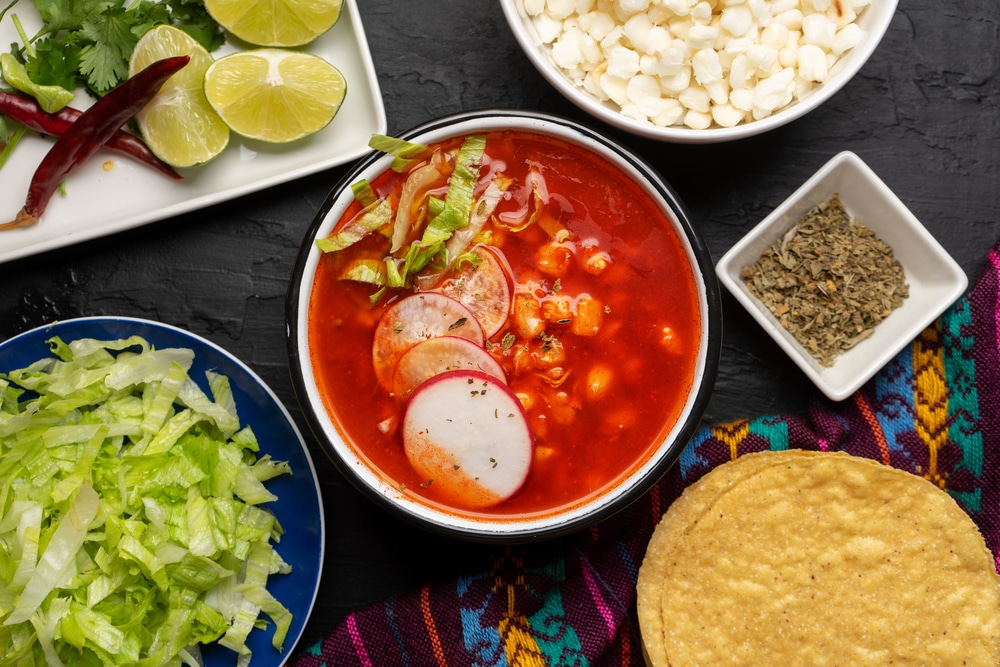
Pozole Palette: Discovering the Delicious Red, White, and Green Pozoles
Of pre-Hispanic origin, pozole is one of the most traditional dishes served primarily during the national holidays. I’ll tell you everything you should know about it. Stay tuned.
Among the great flavors offered by Mexican gastronomy, this is one of the most traditional dishes, especially for celebrations and national holidays.
One of the most exciting facts about pozole is its pre-Hispanic origin. This dish was created by the Mexicas between 1325 and 1521 and was a ceremonial dish eaten during religious festivities.
According to Fray Bernardino de Sahagún, who wrote the Historia General de las Cosas de la Nueva España, pozole was prepared with the meat of defeated warriors during the ceremony “Tlacaxipehualiztli,” that is, “feast of dismemberment,” in honor of the god Xipe Tótec.
Therefore, the name of this dish was “tlacatlaolli,” which means “shelled corn of men.”
What is Pozole?
Pozole consists of a broth made from cacahuazintle corn kernels. Formerly, this dish was consumed only by nobles, rulers, and warriors during religious ceremonies.
Below, I will tell you everything you should know about red, white, and green pozole, a traditional Mexican dish.
The word pozole comes from the Nahuatl “pozolli,” derived from the words “potzonalli” and “apotzontli,” which means foamy or bubbly and refers to the foam in the broth when it is boiled.
Also, pozolero corn, better known as cacahuacintle, comes from the union of “cacahuatl,” which means cocoa, and “centli,” which means corn.
The Mexica people called it this way because its size resembles a cocoa bean.
Pozole Ingredients
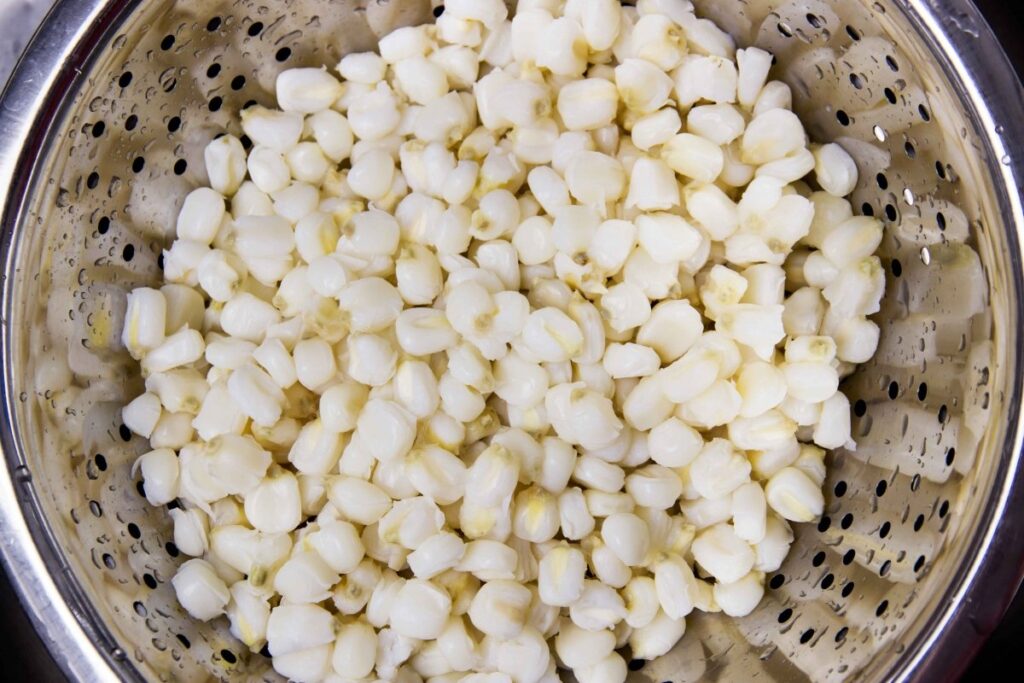
Although pozole has different variations, it consists of a broth made from corn kernels, to which pork, beef, or chicken is added as a secondary ingredient, depending on the region of Mexico.
Generally, pozole is accompanied by other ingredients that enhance its flavors, such as finely chopped lettuce and onion, cabbage, ground oregano, lime juice, radish slices, avocado, fresh cheese, chicharrón (pork rinds), and chili powder.
These ingredients are placed on the table before the meal so that each diner can add the desired amount.
It is common to accompany the prepared pozole with corn tortilla chips (tostadas).
Types of Pozole
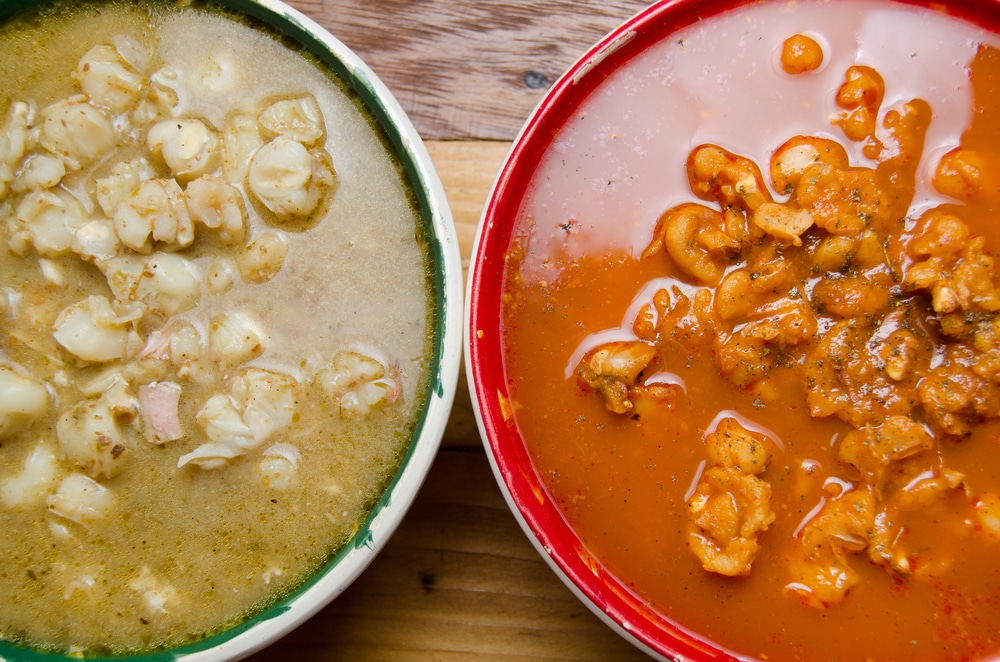
Thanks to the country’s tremendous gastronomic diversity, different versions of pozole vary according to the region where it is prepared.
While in the north of Mexico, pozole is usually prepared with a broth of pasilla or guajillo chile and beef, leg, or pancita (small gut).
In central and southern states such as Guerrero, it is made with green pepita mole and pork.
Also, in Guadalajara Jalisco, it is cooked with beef head and broth with guajillo chile.
In this way, pozole can be classified according to the color of its broth:
Pozole Blanco
With corn and beef broth.
Red Pozole
With pasilla or guajillo chile broth.
Green Pozole
With pepita (pumpkin seed) mole broth.
Pork
While the traditional recipe for pozole used meat from defeated warriors, the Spanish introduced pork to replace this ingredient, which was considered an aberration by the Mexica.
The Spaniards said that pork meat was similar in taste, texture, and amount of fat to human flesh, so the Mexica adopted it.
This is the traditional ingredient used today to prepare pozole.
Green Pozole on Thursdays
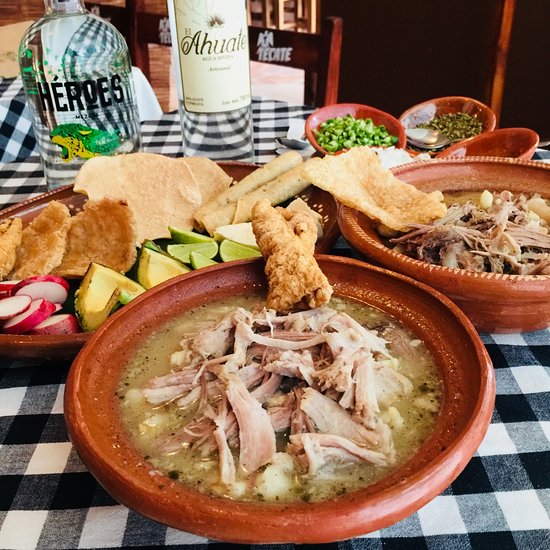
One of Mexico’s most deeply rooted customs is the “Pozolero Thursday,” which originated in Taxco and Guerrero’s rest.
It is said that, traditionally, pozole was made in its white version on Wednesdays.
However, as a significant amount was left over, the green mole was added to offer it as a different dish the following day.
Delicious and nutritious
Although it may seem otherwise, according to the Mexican Bureau of Health, pozole is a healthy dish if consumed between 90 and 100 grams, the equivalent of a medium bowl.
However, to be considered a balanced dish, it must include all the vegetables and omit extra ingredients such as chicharrón (pork rinds), tostadas, and cream.


